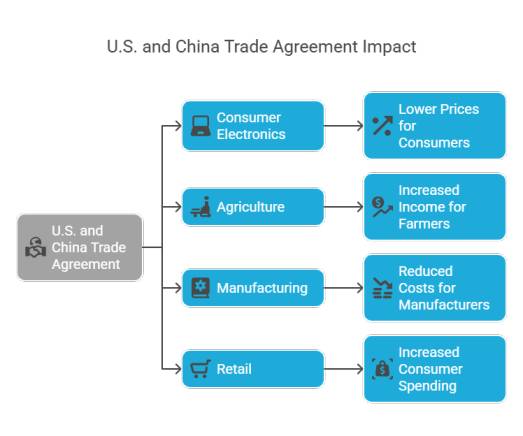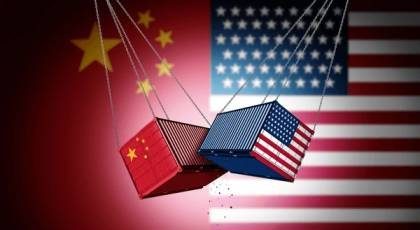The global economic landscape has shifted dramatically today with the announcement that the United States and China have reached a comprehensive economic and trade agreement. This landmark deal includes a significant reduction in tariffs imposed by both nations over the past few years, signaling a potential thaw in the long-standing trade tensions. Businesses worldwide are now closely analyzing the details of this U.S. & China Trade Agreement and its potential impact on supply chains, consumer prices, and overall economic growth. This blog post will delve into the key aspects of the U.S. & China Trade Agreement, explore its implications, and offer insights into what this means for the future of international commerce.
Understanding the Key Components of the U.S.-China Trade Agreement
This newly forged U.S. & China Trade Agreement is multifaceted, addressing several critical areas beyond just tariff reduction. While the lowering of tariffs is undoubtedly the headline, the agreement also encompasses commitments related to intellectual property protection, agricultural trade, financial services, and technology transfer.
- Significant Tariff Reductions: The agreement outlines a phased approach to reducing tariffs on a wide range of goods traded between the two countries. While specific percentages vary depending on the sector, the overall trend points towards a substantial decrease in the cost of imported goods for both American and Chinese consumers and businesses. For instance, tariffs on certain electronics and agricultural products are reportedly being reduced by as much as 50% in the initial phase.
- Intellectual Property Protection: A key point of contention in previous trade disputes, this agreement includes stronger provisions for the protection of intellectual property rights, including patents, trademarks, and copyrights. This aims to provide greater security for American and Chinese companies operating in each other’s markets and encourage innovation.
- Agricultural Trade Boost: China has reportedly committed to increasing its purchases of American agricultural goods, potentially providing a significant boost to U.S. farmers. This includes products like soybeans, corn, and meat.
- Financial Services Liberalization: The agreement includes measures to further open up the financial services sector in both countries, allowing for greater access for foreign financial institutions.
- Technology Transfer Concerns: The agreement addresses concerns about forced technology transfer, with commitments from both sides to refrain from practices that compel companies to share proprietary technology as a condition for market access.
The Phased Approach to Tariff Reduction
The tariff reductions outlined in the U.S. and China trade agreement are not being implemented overnight. Instead, a phased approach has been agreed upon, likely to allow businesses time to adjust their supply chains and pricing strategies. The initial phase, commencing in the coming weeks, will see the most significant cuts on a select range of goods. Subsequent phases will follow, contingent on both countries meeting the commitments outlined in the agreement. This gradual implementation aims to minimize disruption to global markets.
Impact on Key Industries
The U.S. and China trade agreement is poised to have a significant impact on various industries:
- Consumer Electronics: Lower tariffs on electronics imported from China could lead to reduced prices for American consumers on everything from smartphones to laptops.
- Agriculture: Increased Chinese demand for American agricultural products could boost the incomes of U.S. farmers and agricultural businesses.
- Manufacturing: Reduced costs for imported components and raw materials could benefit American manufacturers. Similarly, Chinese manufacturers will see reduced costs on imported machinery and materials from the U.S.
- Retail: Lower tariffs across a range of consumer goods could translate to lower prices at the retail level, potentially boosting consumer spending.

Analyzing the Broader Economic and Geopolitical Implications
Beyond the immediate impact on specific industries, this U.S. and China trade agreement carries significant broader economic and geopolitical implications.
- Global Economic Growth: The reduction in trade tensions between the world’s two largest economies could provide a much-needed boost to global economic growth. Uncertainty surrounding trade policies has been a significant headwind in recent years, and this agreement could help to alleviate some of that uncertainty.
- Supply Chain Adjustments: Businesses that have been actively diversifying their supply chains to mitigate the impact of tariffs may need to re-evaluate their strategies. The reduction in tariffs could make maintaining existing supply chains more cost-effective in some cases.
- Geopolitical Stability: While economic in nature, this agreement could also contribute to a more stable geopolitical relationship between the U.S. and China. Cooperation on trade can often pave the way for dialogue and collaboration on other global issues.
- Impact on Other Nations: The U.S. and China trade agreement will also have ripple effects on other nations. Countries that have benefited from the trade diversion caused by the tariffs may see some of that trade return to the U.S. and China.
“This agreement represents a significant step towards normalizing trade relations between the United States and China, which is crucial for global economic stability,” commented Dr. Anya Sharma, a leading international trade economist at the Global Policy Institute.
Potential Challenges and Future Outlook
Despite the positive developments, challenges remain. The implementation of the agreement will need to be carefully monitored to ensure compliance from both sides. Moreover, underlying tensions related to technology competition and geopolitical influence have not entirely disappeared.
- Enforcement Mechanisms: The effectiveness of the agreement will depend heavily on the enforcement mechanisms put in place to ensure that both countries adhere to their commitments.
- Ongoing Negotiations: While this agreement is comprehensive, it is likely that negotiations on other trade-related issues will continue in the future.
- Geopolitical Factors: Broader geopolitical tensions could still impact the implementation and long-term success of the U.S. and China trade agreement.
How Businesses Can Adapt to the New Trade Landscape
With the implementation of the U.S. and China trade agreement, businesses need to proactively adapt to the evolving trade landscape.
- Review Supply Chains: Companies should reassess their supply chain strategies to take advantage of the reduced tariffs. This may involve re-evaluating sourcing decisions and logistics.
- Analyze Pricing Strategies: The reduction in import costs could create opportunities to adjust pricing strategies and potentially increase competitiveness.
- Monitor Regulatory Changes: Businesses need to stay informed about the specific details and timelines of the tariff reductions and other regulatory changes outlined in the agreement.
- Explore New Market Opportunities: The agreement could open up new market opportunities in both the U.S. and China. Businesses should explore these potential avenues for growth.
- Review Supply Chains: Assess current sourcing and logistics in light of reduced tariffs.
- Analyze Pricing: Determine if cost savings from lower tariffs can be passed on or reinvested.
- Monitor Regulations: Stay updated on the specific implementation details of the agreement.
- Explore New Markets: Identify potential growth opportunities in the U.S. and China.
Conclusion: A New Era of U.S.-China Trade?
The U.S. and China trade agreement marks a significant turning point in the economic relationship between the two global powers. The reduction in tariffs and commitments to address other key trade issues offer a glimmer of hope for reduced trade tensions and a more stable global economic environment. However, the long-term success of this agreement will depend on consistent implementation and a continued commitment to constructive dialogue. Businesses must remain vigilant and adaptable to navigate this new era of U.S. and China trade.
Call to Action: What are your thoughts on the new U.S.-China trade agreement? Share your insights and predictions in the comments below!
